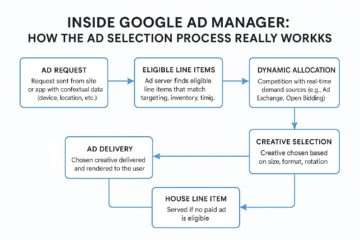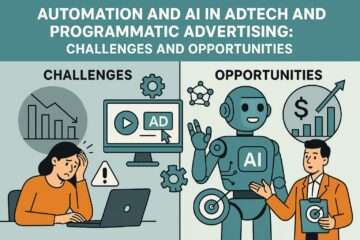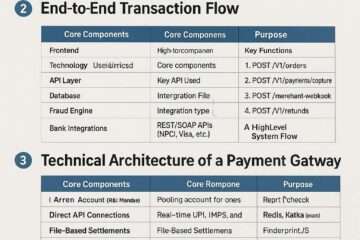

In the fast-paced world of programmatic advertising, a seismic shift is underway as of April 2025: agencies are forging deeper, more direct relationships with supply-side platforms (SSPs). This strategic pivot is not just a trend but a deliberate response to persistent challenges in the programmatic ecosystem—ad fraud, lack of transparency, and inefficient inventory access. By aligning closely with SSPs, agencies are redefining how digital ad campaigns are executed, delivering greater value to brands while navigating an increasingly complex landscape.
The Catalyst for Change
The traditional programmatic model, reliant on demand-side platforms (DSPs) as intermediaries, has long been plagued by inefficiencies. Agencies often grapple with hidden fees, murky supply chains, and ad placements on low-quality or fraudulent sites. SSPs, which serve as the bridge between publishers and ad buyers, manage the inventory that fuels programmatic auctions. Historically, agencies interacted with SSPs indirectly through DSPs, but this layered approach diluted control and obscured insights. Frustrated by these limitations, agencies are now bypassing middlemen to partner directly with SSPs, seeking to streamline operations and enhance campaign outcomes.
This shift is driven by a demand for accountability. Advertisers, wary of wasting budgets on ineffective impressions, are pushing agencies to prove ROI. Direct SSP relationships offer a solution, granting agencies unprecedented access to premium inventory and granular data. These partnerships enable tailored strategies that align with brand objectives, whether it’s maximizing reach or ensuring ads appear in brand-safe environments.
Combating Ad Fraud Head-On
Ad fraud remains a stubborn adversary in programmatic advertising, with industry estimates suggesting losses of $80 billion annually to fake clicks, bots, and spoofed domains. By working directly with SSPs, agencies can scrutinize inventory sources with greater precision. SSPs provide detailed reporting on publisher networks, allowing agencies to filter out suspicious or low-value placements. For example, collaborating with SSPs like Magnite or PubMatic lets agencies prioritize verified, high-traffic sites, reducing the risk of ads appearing on made-for-advertising (MFA) pages designed to game impressions.
These partnerships also foster proactive fraud prevention. SSPs are increasingly integrating tools like ads.txt and supply path optimization (SPO), which help agencies trace the journey of every ad dollar. This transparency ensures budgets are spent on real human audiences, not bots, bolstering client trust and campaign efficacy.
Unlocking Transparency and Control
Transparency has long been the Achilles’ heel of programmatic buying. The “black box” of ad tech, where agencies struggle to see where ads run or how fees accumulate, has eroded confidence. Direct SSP ties dismantle this opacity. Agencies gain real-time visibility into inventory performance, from impression quality to contextual relevance. SSPs like OpenX and Google Ad Manager offer dashboards that reveal which publishers deliver the best engagement, empowering agencies to optimize campaigns on the fly.
Control extends beyond transparency to data and audience targeting. With third-party cookies phasing out—Google’s Privacy Sandbox looms large—agencies are leaning on SSPs to harness first-party data from publishers. This data fuels precise audience segmentation, enabling hyper-targeted campaigns without violating privacy regulations. For instance, an agency working with an SSP can tap into a publisher’s logged-in user base to serve ads tailored to specific demographics, all while complying with GDPR or CCPA standards.
Curating Premium Inventory
One of the standout benefits of agency-SSP alliances is access to curated, high-quality inventory. SSPs connect agencies to premium publishers—think major news outlets, streaming platforms, or niche blogs—that might be diluted in open DSP auctions. Through private marketplaces (PMPs) or preferred deals, agencies secure exclusive slots, ensuring ads appear in brand-safe, contextually relevant environments. This is a game-changer for industries like luxury or finance, where placement matters as much as reach.
These deals also allow agencies to negotiate terms directly, cutting out DSP markups. By streamlining the supply path, agencies reduce costs and pass savings to clients. A recent industry report noted that SPO strategies, enabled by SSP partnerships, can shave up to 20% off programmatic spend while boosting impression quality—a compelling case for closer collaboration.
The Challenges of Going Direct
Despite the promise, direct SSP relationships come with hurdles. For one, they demand significant technical expertise. Agencies must invest in staff training or hire specialists to navigate SSP platforms, which can be daunting for smaller firms. Integrating SSP workflows with existing tech stacks also poses logistical challenges, requiring robust data management systems to handle real-time bidding and reporting.
There’s also the risk of market concentration. If agencies lean too heavily on a handful of dominant SSPs, it could stifle competition and limit inventory diversity. Smaller SSPs or niche publishers might struggle to compete, potentially narrowing the programmatic ecosystem. Agencies must balance partnerships to maintain flexibility while scaling efficiency.
A Broader Industry Shift
The agency-SSP alliance reflects a broader push to clean up programmatic advertising. Initiatives like the IAB’s transparency standards and the rise of SPO are gaining traction, urging all players—agencies, SSPs, DSPs, and publishers—to prioritize accountability. Agencies leading the charge with SSPs are setting a precedent, signaling to clients that programmatic can be both innovative and trustworthy.
Looking ahead, these partnerships could redefine industry dynamics. As SSPs evolve, offering AI-driven optimization and cross-channel solutions (think CTV, DOOH, and audio), agencies stand to gain tools that unify fragmented media buys. This convergence promises campaigns that are not only efficient but also creatively impactful, blending data precision with storytelling.
The Future of Programmatic Collaboration
The tightening bond between agencies and SSPs is more than a tactical move—it’s a strategic overhaul of programmatic advertising. By tackling fraud, enhancing transparency, and securing premium inventory, these partnerships empower agencies to deliver measurable results. For brands, the payoff is clear: campaigns that resonate, budgets that stretch further, and a digital presence that cuts through the noise.
As the industry marches toward a privacy-first, tech-driven future, agency-SSP collaborations will likely become the backbone of programmatic success. Agencies that master this model stand to gain a competitive edge, proving that in the world of ad tech, closer ties can yield bigger wins.



























































